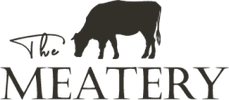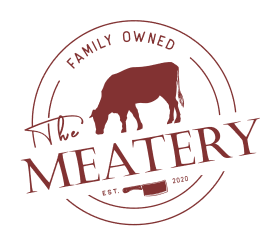Australian Wagyu Industry Overview
The Australian Wagyu industry represents one of the most successful agricultural adaptations in modern farming history. Beginning in the 1990s, Australia emerged as a significant player in the global Wagyu market, second only to Japan in terms of herd size and production quality. The industry now contributes over $1 billion annually to the Australian economy.
Australian Wagyu production combines traditional Japanese breeding techniques with modern Australian farming practices. The country's vast pastoral lands and advanced agricultural infrastructure provide ideal conditions for raising these premium cattle. Currently, Australia maintains approximately 360,000 Wagyu-influenced cattle, with about 30,000 fullblood animals.
The industry's success stems from several key factors:
- Strategic breeding programs maintaining genetic purity
- Advanced traceability systems ensuring authenticity
- Strict quality control measures
- Favorable climate conditions
- Strong export relationships with global markets
Australian Wagyu producers have established themselves as reliable suppliers of high-quality beef to international markets, particularly in Asia and North America. The industry's commitment to maintaining genetic integrity while adapting to modern production methods has created a unique position in the global premium beef market.
Australian Wagyu Development And History
The development of Australian Wagyu began in 1991 with the first importation of Japanese Wagyu genetics. The initial imports included both Black (Tajima) and Red (Akaushi) Wagyu genetics, primarily through embryos and live cattle. This marked the beginning of a carefully planned breeding program that would transform Australia's beef industry.
Key historical milestones include:
- 1991: First Wagyu genetics imported from Japan
- 1993-1997: Additional imports of genetic material
- 2000s: Establishment of the Australian Wagyu Association
- 2010s: Development of comprehensive breeding programs
The breeding strategy focused on maintaining pure bloodlines while also developing crossbreeding programs with local cattle breeds, particularly Angus. This created various grades of Wagyu-influenced beef, from F1 (50% Wagyu) to fullblood (100% Wagyu) animals. The careful documentation and preservation of genetic lines have been crucial in maintaining the integrity of Australian Wagyu.
Sustainability And Animal Welfare
Australian Wagyu producers have established themselves as global leaders in sustainable beef production and animal welfare practices. The industry operates under strict guidelines that prioritize both environmental responsibility and ethical animal treatment.
Key sustainability initiatives include:
- Water conservation programs
- Regenerative grazing practices
- Carbon footprint reduction strategies
- Waste management systems
Animal welfare standards for Australian Wagyu exceed typical industry requirements. Producers implement comprehensive care programs that include:
- Stress-free handling techniques
- Optimal nutrition management
- Regular veterinary care
- Comfortable living conditions
These practices not only ensure ethical treatment but also contribute to the superior quality of the final product, as stress-free animals produce better meat.
Expectations Vs. Reality
While Australian Wagyu has earned a reputation for excellence, consumer expectations sometimes differ from reality. The most common misconceptions revolve around marbling levels and price points.
Common expectations:
- All Wagyu beef has extreme marbling
- Australian Wagyu is identical to Japanese Wagyu
- Higher prices always indicate better quality
Reality:
- Marbling varies significantly based on genetics and grade
- Australian Wagyu has its own distinct characteristics
- Quality depends on multiple factors beyond price
Understanding these differences helps you make informed decisions and appreciate Australian Wagyu for its unique qualities rather than comparing it directly to Japanese variants.
Is all Australian Wagyu halal in the USA?
Not all Australian Wagyu imported to the USA is automatically halal-certified. While Australia has a robust halal certification system, individual producers must specifically obtain halal certification for their products. The certification process involves:
- Adherence to Islamic slaughter requirements
- Regular audits by certified halal authorities
- Proper segregation during processing
- Clear documentation and traceability
If you are seeking halal Australian Wagyu should:
- Look for official halal certification marks (Which TheMeatery can provide!)
- Verify certification with reliable authorities
- Purchase from authorized halal distributors
Many Australian Wagyu producers do maintain halal certification to serve diverse market demands such as TheMeatery, but it is always best to triple check before checkout.
What is the difference between Japanese and Australian Wagyu grading?
Japanese and Australian Wagyu grading systems differ significantly in their approach and criteria. The Japanese system (BMS) ranges from 1-12, while the Australian (AUS-MEAT) system uses marble scores from 0-9+.
Japanese Grading System:
- BMS (Beef Marbling Score): 1-12
- Considers meat color, fat color, and firmness
- Includes yield grade assessment
- More stringent overall criteria
Australian Grading System:
- Marble Score: 0-9+
- Focuses on marbling distribution
- Includes MSA (Meat Standards Australia) grading
- More adaptable to various production systems
While both systems maintain high standards, they reflect different market needs and production philosophies. The Australian system provides greater flexibility while maintaining strict quality control.









